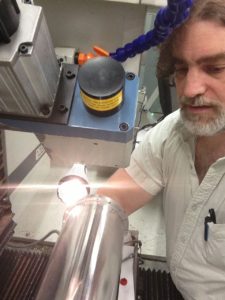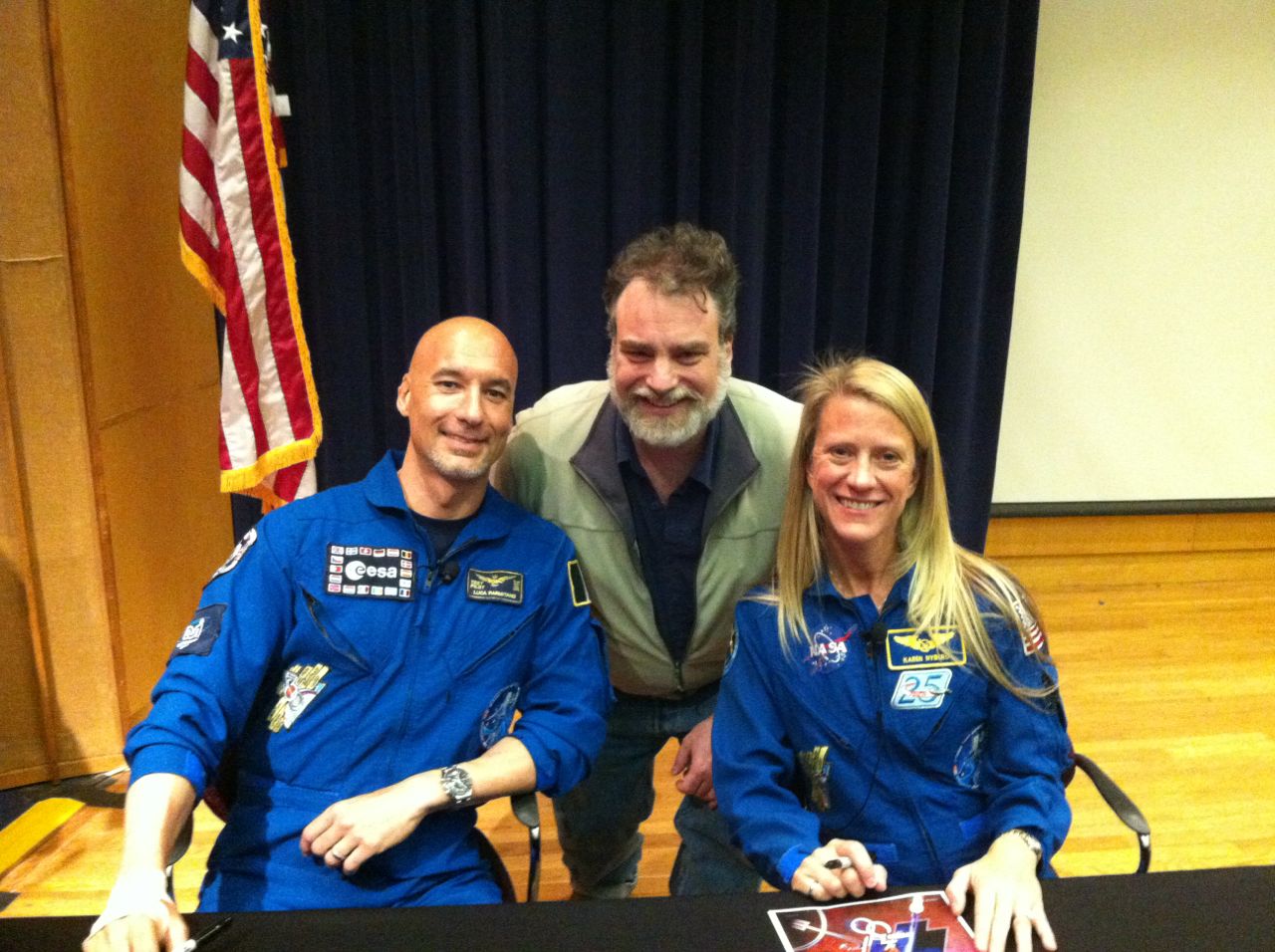
Paul Mirel builds devices that investigate the Big Bang. As a Systems Engineer at Wyle Information Systems, he does engineering work for the NASA PIPER (Primordial Inflation Polarization ExploreR) mission. The polarization-sensitive microwave telescopes he creates measure light left over from the Big Bang.
From an early age, Paul loved to take things apart and put them back together. He started with his nursing bottles and went on to build model airplanes. His mother saved money by buying kits with Japanese instructions (Paul couldn’t read yet but didn’t need the written instructions, anyhow). “Mechanical assembly drawings were my first written language.” To produce effective new mechanisms and instruments, says Mirel, one must think about the many ways they might break and how one might avoid these problems. “Imagination is very important in engineering.”
For about a decade, Mirel taught high school physics, noticing that many people “have a lot of learned helplessness around science and math” but accomplish acts related to physics every day when opening doors or making ice. Math might not seem useful on its own, says Mirel: “the useful part is coming up with a model with which to apply the math: that’s important and requires imagination and ingenuity.”

The work that engineers and astrophysicists do at NASA creates jobs and leads to technological innovations. Mirel points out that the tiny cameras in our cell phones use technology developed to improve optics for the Hubble telescope. In addition to their use in astronomical and cosmological investigation, wire grids like the ones Mirel develops can be used to measure sea surface salinity and other Earth Science signals.
Creating the wire grid polarizers for NASA’s PIXIE (Primordial Inflation eXplorer) and PIPER missions was a challenge. “It’s the single hardest thing I’ve ever done.” The polarizers are made of wire thinner than human hair, about the diameter of a red blood cell. There are 6,000 of them in parallel across an area the size of a cafeteria tray. The wires are π (Pi) times as far apart as they are wide. The result looks like a sheet of transparent copper.
The PIPER team will measure the Cosmic Microwave Background (light leftover from the Big Bang) to test the Primordial Inflation Theory, which explains how the universe got its structure. The universe is mostly dark with clumpy bits (stars and planets and galaxies). Primordial Inflation Theory explains how that might have come to be, and the PIPER mission will gather evidence to test the theory. A Harvard-Smithsonian team using a telescope on the ground at the South Pole has seen evidence to support the Primordial Inflation Theory. The BICEP2 (Background Imaging of Cosmic Extragalactic Polarization) team detected the characteristic signal about 100x brighter than scientists expected. The PIPER team will make measurements from a different platform (on a balloon) to see if they get similar or different results. Either way, the results will tell us more about what happened at the very beginning of the universe, and about how the clumpy universe of stars and planets and galaxies acquired its clumpiness.



